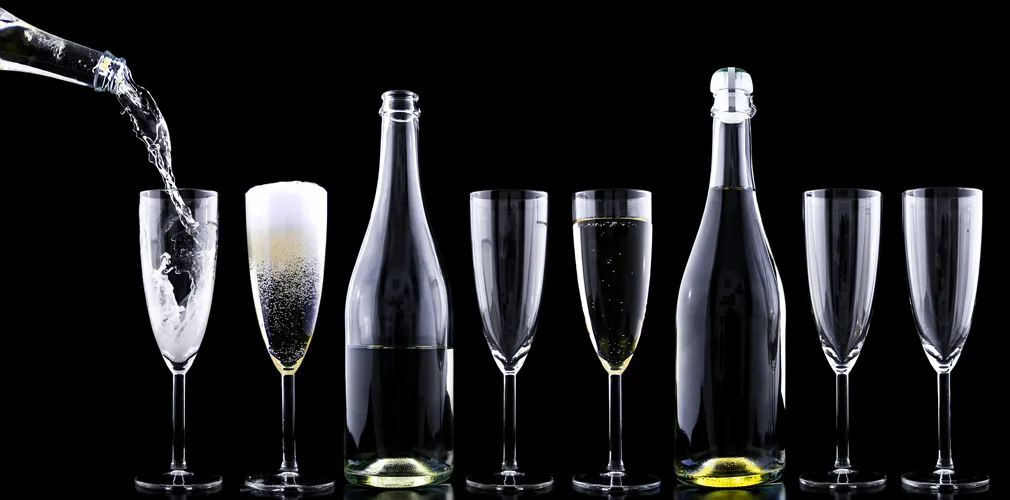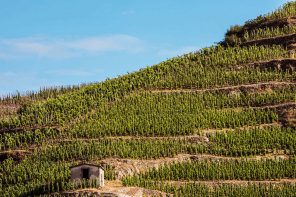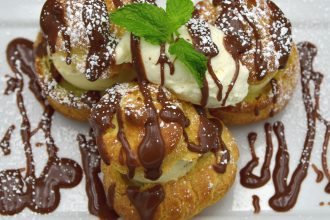shăm-pān’ /prəˌnənsēˈāSH(ə)n/
The holidays are upon us, which means there are many opportunities to kick back with friends and family and enjoy a good bit of bubbly. But how do you say all those tricky words that surround everyone’s favorite effervescent drink?
Instead of mumbling through the next month, embrace proper pronunciation! Here is a cheat-sheet to the most common Champagne-words that stump us:
Blanc de Blancs
White wine from white (Chardonnay) grapes. Simple enough, right? Not so fast. ‘Blonk de Blonk’ is how you should be reading those words. Forget that ‘s’ at the end, the French do, so we do.
Blanc de Noirs
White wine from black (Pinot Noir and Pinot Meunier) grapes. Also a simple concept. Here we follow the same rule as it’s white grape counterpart. Forget about that last ‘s.’
Pinot Meunier
After Chardonnay and Pinot Noir, people often forget about this little guy (maybe because that second word is harder to say)? Just try and combine a soft ‘Moo’ and a ‘Nyah’ and you’re all set.
Reims
A town where a lot of the famous Champagne houses are located. This one, when properly pronounced, sounds like you are trying to dislodge something from your throat. It is actually shocking to hear. So aim for shock-value here- say it like you are angry at someone or imitating a car engine starting up. Make sure to roll the ‘R’ for an excessive period of time ‘RRRRRRommmz.’
Veuve Clicquot
One of the most widespread Champagne houses. Their signature orange color can be seen in almost every wine shop right now in America. The Veuve (Widow) Clicquot really made a name for herself, but how do we pronounce it? ‘Vove Cleeck-o’!
Négociant
A wine merchant that takes grapes from small growers to make their own blend. These are the big guys- Ruinart, Charles Heidsieck, Louis Roederer.. you get the deal. Next time you are at a party and one of these tasty fellows is being served you can sound super smart by remarking, “Ah, a ‘Ne-go-see-ont’ Champagne…’
Tête de Cuvée
A Champagne House’s prestige cuvée, think Moet et Chandon’s “Dom Perignon” or Krug’s “Clos du Mesnil.” It literally translates to “Head of House,” which sounds way less sexy than the french version, so let’s just always stick with their version. The trick here is to really make your mouth super small and puckered out like you are about to kiss a baby, then, barely moving your lips, whisper out ‘tet de cuuevay.’
Méthode Champenoise/Traditionelle
All this means is that the wine was made in a way that follows all those fancy Champagne rules. That ‘th’ sound we are so fond of in the English language has no place here. Throw it out. Instead we pronounce this guy as so- ‘Me-toad Chomp-en-wawz/Truh-diss-yu-nell’
Dosage
This just means how much of that sweet sugar is added before bottling. A little goes a long way here. Next time a Sommelier pours you a glass of Champagne, taste it and ask, “Hmm.. what’s the ‘doe-saw-j’ here?” A good Sommelier will know the sweetness range but a newbie will squirm uncomfortably and turn red, which is always fun.
The Regions of Champagne:
Montagne de Reims– ‘Mawn-ton-yuh de RRRRRRommmz.’ (Another fun chance to say ‘Reims’).
Vallée de la Marne– ‘Val-lay de la Marn’ (Marn sounds like Barn)
Côte des Blancs- ‘Coat de Blonck’ (Sounds like Plonk)
Côte de Sézanne- ‘Coat de Say-zawn’ (It’s like ‘Suzanne’ mixed with ‘Lawn’)
Côte des Bars (the Aube)- ‘Coat de Bar’ (that is easy enough) and ‘Oh-buh’ is how you say the more common name for the region. It sounds almost like a sound you would make when annoyed, which you might be, since this hipster region has two names.









For real? I suppose MS didn’t require actual speaking knowledge in French: there’s some serious impropriety about the pronunciations given here.
First, we don’t pronounce the [k] in blanc. While I understand the difficulty for Americans in pronouncing eu as [œ], why be inconsistent and give “moo” for meu-nier and “vov” for veuve? The one for Reims is so outré I don’t know where it came from. And “doe-saw” for dosage? We do say the soft g [ʒ] here, you know.